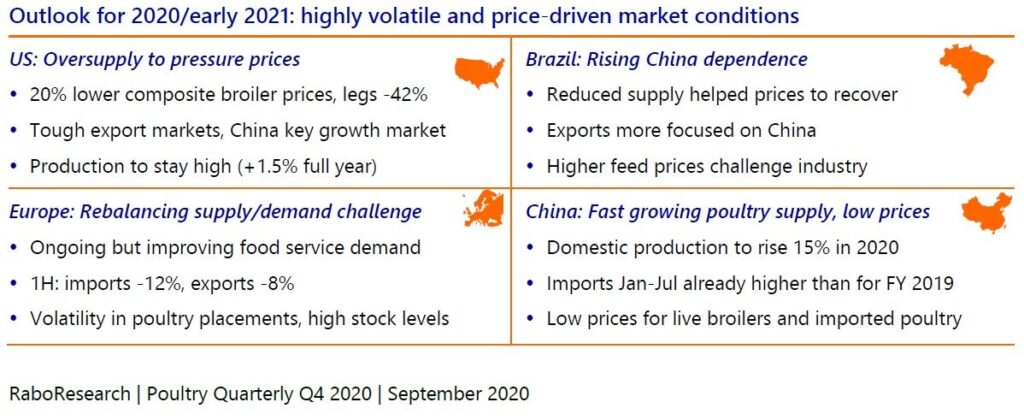Global poultry trade challenged in volatile markets

Rabobank expects a slight increase in global poultry production (+0.8% YOY), mostly as a result of poultry expansion in China and Vietnam, where African swine fever has reduced pork availability, and also from expansion in the US.
The rest of the world will be operating in an environment of shrinking production, says Nan-Dirk Mulder, senior analyst, animal protein, Rabobank.
Moving through Q4 2020 and into 2021, the global poultry industry will operate in a volatile market context, with pressure coming from foodservice and wholesale markets. Possible new waves of Covid-19 will add to the market ups and downs, and the impact of a deep economic crisis will make markets more price-driven, finds the bank in its poultry quarterly.
Global trade has become difficult, with most import markets reducing volumes, said the analysts.
“Trade into ASF-affected markets like China, the Philippines, and Vietnam has become more important, and this raises risks as local production recovers. Exporters like Brazil, the US, and Russia are focused on China, with export volumes expanding quickly, but with price concessions.
“The key challenge for producers in such volatile markets is to balance supply and demand, and the experience so far this year shows how difficult this is.”
Globally, poultry demand will rise slightly due to substitution from pork to poultry, especially in ASF hit markets, and also in markets with more price-driven consumption given the economic crisis. “
Differences in expected poultry production growth are bigger than ever, ranging from a hike of 15% for China and an increase of 5% in Vietnam. Thailand and India will see a downturn in poultry production, predicted the analysts.
Many issues are affecting trade, with the opening of China for US and Russian exporters a big disruptive factor. Avian Influenza remains another ongoing risk, see again in Vietnam, and still affecting Poland and Ukraine, said the Rabobank team.
Feed price trend
On the feed side, they noted, there is limited upside in prices.
Crop conditions for wheat, corn, and soy look good, though China’s meat production rebound could see an upsurge in demand from that country for feed raw materials. European wheat crops were affected by drought earlier this year, although Eastern European crop conditions look better, said the analysts.
In some markets, the feed price picture is somewhat different, however, due to foreign exchange (FX) volatility and local weather condition – animal protein industries in Russia, South African, Brazil and Mexico have seen local feed prices rising as commodity prices follow global market parity, they said.

Source : feednavigator